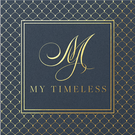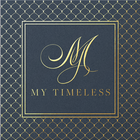Edwardian Era (1901-1915) in Great Britain, In France was called Belle Époque (beautiful era)
When the war finally arrived, galas and formal receptions disappeared overnight and jewels were locked in security vaults or sold for survival. During the war, very little, or no Jewellery was produced, and」Jewellers often turned their skills to the military industry or went to the front. Precious metals became scarce or restricted, and, in many countries, gold jewellery was donated to the state to finance the war. The prophetic words of Lord Grey in 1914 that 'The lights are going out all over Europe...'were also to prove true of the Bunsen burners in the jewellery workshops in Birmingham.
Edwardian jewellery and the contemporary jewellery of the rest of Europe, which did not fully embrace the revolutionary innovations of the art nouveau, were characterised by a lightness and delicacy which had their roots in eighteenth century jewellery and goldsmith design. Garlands and ribbon bows, entrelacs-de rubans motifs, hearts and paired hearts were resuscitated and became the leitmotif of early twentieth century jewellery
The master of the 'garland style' was Louis Cartier who encouraged his designers to consult the original eighteenth century pattern books . Garlands, laurel ,wreaths, bow, knots, tassels and lace motifs were among his favourite decorative devices. His royal, aristocratic and, above all, rich clientele on both sides of the Atlantic wore his delicate, articulate, light and insubstantial creations with enthusiasm: dog collars, devant de corsage pendants and tiaras
The rigid quality of platinum also enabled the jeweller to fret the metal, Aby means of a piercing-saw, into lace-hke, or delicate geometric, patterns.
The garland style influenced the production of almost all」Jewellery houses in the early years of the century. George Fouquet turned to swags and garlands, piercing and millegrain settings after his experiments in the art nouveau style. Henry Vever combined flowing art Nouveau lines with informal patterns of eighteenth century inspiration. Lacloche, Boucheron, Chaumet and Mellerio also followed the fashion closely
Cartier, in 1902 and 1909 respectively, opened his shops in London and New York, where his jewels in the garland style, already famous all over the world, became readily available to his wealthy English and American clients drawn from the royal houses, the aristocracy, trade, commerce, and the world of the theatre. The delicacy and finesse of these jewels, well suited the dress designs of the beginning of the century.
When, around 1910, the combination of black and white came into fashion, diamond, onyx and occasionally black enamel」Jewellery in the garland style became the craze of the moment, together with diamond jewels applied or pinned to black ribbons of silk moire or velvet




